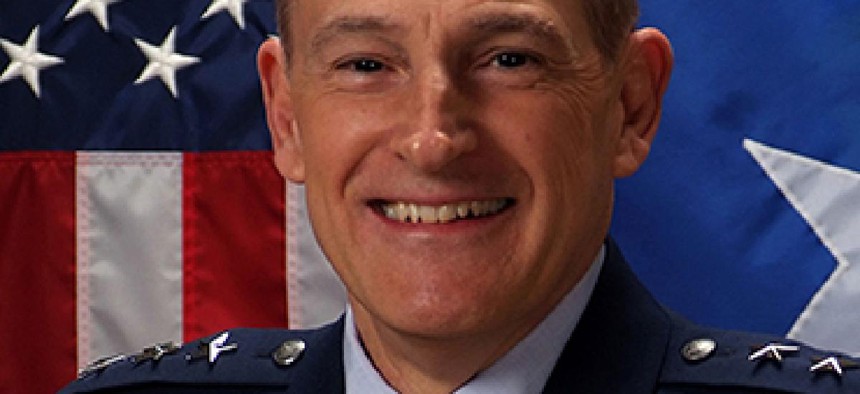Air Force CIO lays out plan for cyber advance

Training and technologies are part of the road ahead for military cyber defense, Basla says.

The Air Force has not shied from admitting it needs to evolve and redefine the service’s approach to cyberspace. Now, on the heels of a Nov. 15 summit that convened top Defense Department officials to discuss cyber, the Air Force CIO is outlining some of the plans to move ahead.
New requirements, new missions, new training and a new era of frugality all are playing central roles as the Air Force works with the U.S. Cyber Command as well as the other services to defend cyberspace, Lt. Gen. Michael Basla told reporters at the Pentagon on Nov. 30.
“Just like the Air Force is maturing, [Cyber Command] is maturing as well. They signed out an operational directive in April that said to the services, ‘These are the capabilities that we need to provide.’” Basla said. Those include “capabilities in support of regional combatant commands [and] capabilities in terms of areas of expertise that the Air Force might have, or the Army might have.”
That list is undergoing refinement, he said. “Given the threat, given the national imperative, what else do we need should the president and the nation call on the Department of Defense to assist?” he said, describing the criteria for revisions.
The answer to that question is one that, like the cyber threat itself, is seeing an ongoing evolution. In October, Gen. William Shelton, commander of Air Force Space Command, admitted that the service’s initial approach to cyber may not have been the best, but said officials there are working to address that.
“In 2006, the Air Force published a forward-looking document on cyber, but I think we’d all agree now that we started out too big and too ambitious, so we had to narrow our definition,” Shelton said. “Just as the environment has changed, I believe our approach needs to change.”
According to Basla, that change is already being implemented as the Air Force faces ongoing reevaluation of the threat landscape and how to best defend there, including by addressing the big picture as well as one a little closer to home.
“We are looking at through a couple of lenses: defense of the nation and support of our regional combatant commanders. That’s the refinement and discussion going on right now – is that the right way to go, and if it is, what’s the right level of support?” Basla said.
One key area Air Force leadership has been re-working is how airmen are trained to operate in cyberspace. Cyber education is becoming integrated with basic training, and increasingly specialized schooling is being offered through the war colleges all the way to cyber weapons instruction, and it is already making a difference, Basla noted.
“Now we see a synergy occurring out there between the planners and the operators that now include cyberspace in our exercises. The planners now recognize that we have more arrows in our quiver; that there are options for targets, and those options don’t have to all be connected,” he said.
That preparation is poised to continue to increase. With roughly $3.5 to $4 billion per year to spend on cyber capabilities, the Air Force now needs to determine where and how to best invest, as well as get a better idea of what is being spent on cyber capabilities in areas not necessarily labeled as cyber. A decision on those investments could be made in the coming weeks, Basla said.
“I believe that we will increase the throughput of our training centers. I can’t tell you the level of that increase until the decisions are made on how much the Cyber Command plus-up will occur over the [future years defense program] and when it will occur,” he said.
That decision is coming very soon, possibly this week, he said. “Once that occurs, that will send the demand signal to us that we’ll have to respond to,” he said.
NEXT STORY: Senate panel takes up electronic privacy issues





